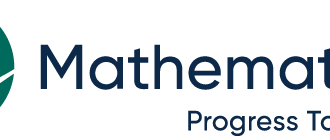Category: Uncategorized
-
3 academic interventions policymakers can support to help get students back on track
Recent research out of NWEA explores what teachers can do to support students. Our collaboration with researchers outside of our organization has also helped us develop recommendations for policymakers. They are presented in our new brief with EdResearch for Action, a project of the Annenberg Institute at Brown University and Results for America. The brief highlights research-based academic interventions and digs into research to highlight the most promising interventions policymakers can support for accelerating student learning in math and reading. We focus on three interventions with the strongest research base—tutoring, summer school, and double-doses of math instruction—before discussing ways schools can create the conditions for academic acceleration practices to succeed.
-
Chronic absenteeism is making academic recovery harder in Ohio
Accelerating student learning remains a moral imperative, and a continuing challenge for Ohio’s policymakers and educational leaders. There has been much discussion about how to boost achievement, but one of the most basic ways to move the needle might be hiding in plain sight: simply making sure that students attend school. Unfortunately, absenteeism soared during the pandemic and remains at alarmingly high levels. Statewide, chronic absenteeism rates increased from 17 to 27 percent between 2018–19 and 2022–23. That translates to 418,382 students who were chronically absent last year. Such students miss more than 10 percent of the school year for any reason, whether excused or unexcused. Based on a 180-day year, that is equivalent to eighteen or more days of school—nearly a month worth of learning. That’s a lot of valuable instructional time lost.
-
Advancing Equitable Outcomes from Pre-K through the Workforce by Aligning State & Local Data Systems
The COVID-19 pandemic exacerbated pre-existing inequities that changed how individuals engage with pre-K programs, schools, colleges, employers, and the world at large. Early evidence suggests the pandemic took a toll on student learning, educational attainment, employment, and physical and mental well-being, especially in communities of color and communities experiencing poverty. In recognition of the fact that better data infrastructure will be needed to shift the systems that currently produce inequitable outcomes, a growing number of states are working to modernize statewide longitudinal data systems to understand the experiences and outcomes of individuals seamlessly across pre-K, K–12, postsecondary, and workforce systems.
-
So What Is High-Dosage Tutoring Anyway?
In “Straight Talk with Rick and Jal,” Harvard University’s Jal Mehta and I examine some of the reforms and enthusiasms that permeate education. In a field full of buzzwords and jargon, our goal is simple: Tell the truth, in plain English, about what’s being proposed and what it might mean for students, teachers, and parents. We may be wrong and will frequently disagree, but we’ll try to be candid and ensure that you don’t need a Ph.D. in eduspeak to understand us.
-
Schools Must Know If Their Learning-Loss Programs Work — Before ESSER Funds End
Since the pandemic began in March 2020, the federal government has provided nearly $190 billion in education funding to states and districts. The three rounds of Elementary and Secondary School Emergency Relief funding represent the largest infusion of federal funds in history for reopening schools, updating buildings and supporting learning recovery. Now, over three years later, is the time to assess whether the dollars have made a difference, and what they should be spent on going forward.
-
A Data-Driven Approach to Enhancing Summer Programs
A new report identifies four areas to focus on to measure and improve summer learning programs, key questions to answer as you seek out data, and research-based recommendations for each area of data collection.
-
How Should Schools Spend ESSER Summer School Funds? RI Case Study Has Some Clues
A research brief from the EdResearch for Recovery Project can provide a roadmap, highlighting eight design principles – including program duration, attendance, use of time and quality of instruction – that matter most in creating effective programs that deliver strong academic benefits for students.
-
Claiborne & Stockwell: Not Enough Tutors to Go Around? College Students Can Help
It seems like everyone is talking about tutoring. Some 40% of school districts and charter organizations are talking about investing billions in tutoring and academic skills coaching to address pandemic-related disruptions to learning. Even more policymakers and researchers are discussing ways to create a national tutoring corps, statewide tutoring groups or lists of state-approved tutoring providers to help districts establish strong programs.
-
Learning with COVID: How educators and students are finding a ‘new normal’
After more than 250 school days, full-time in-person learning in Massachusetts public schools finally resumed in early September. For many, being back in the classroom was reason for celebration, and a highly anticipated return to some sense of normalcy since the COVID-19 pandemic shut school buildings down in March of 2020.
-
Back to School, but Still Learning Online
Federal stimulus dollars are dedicated to helping students recover from virtual schooling. Many districts are spending some of that money on virtual tutoring.




